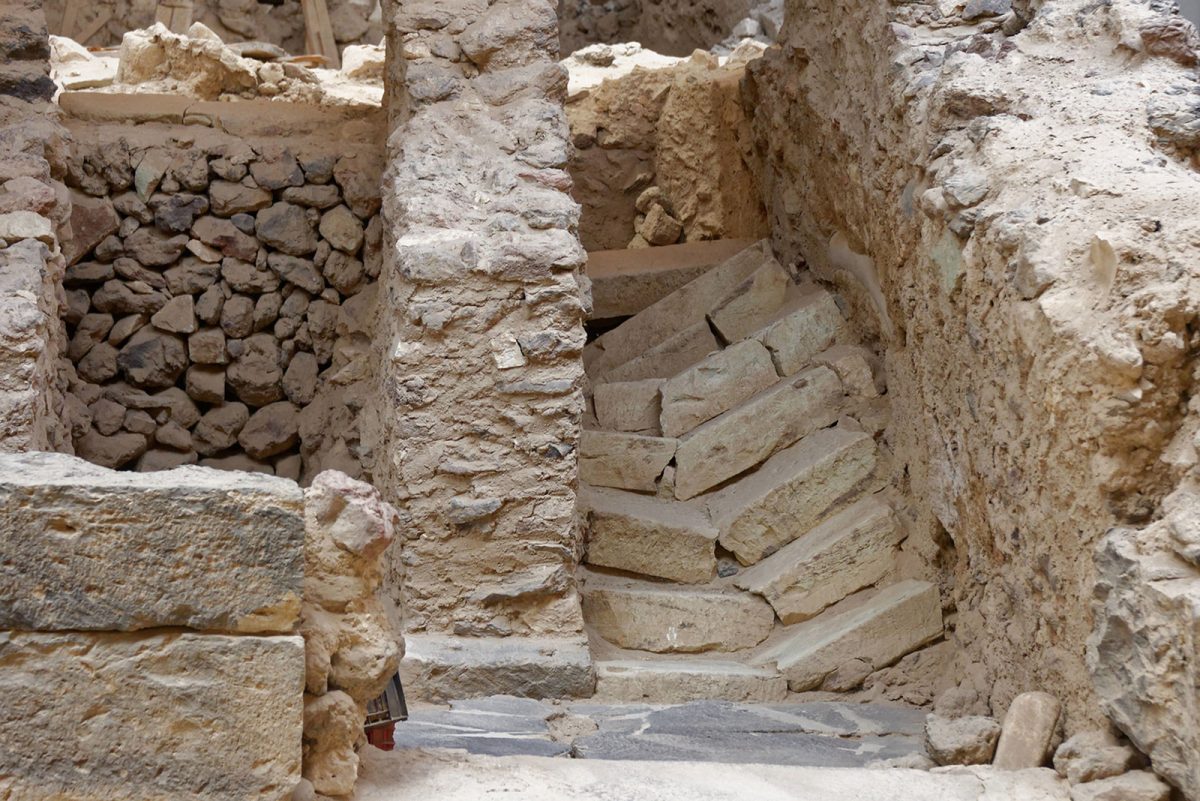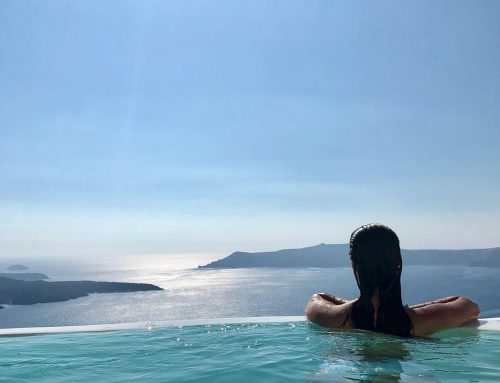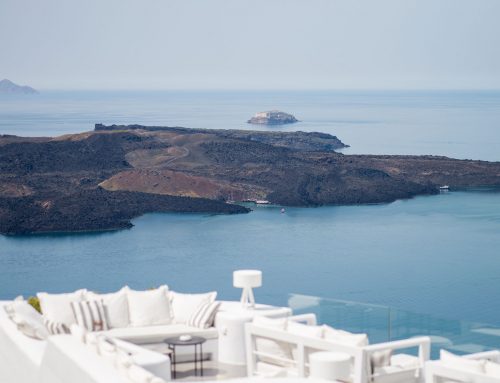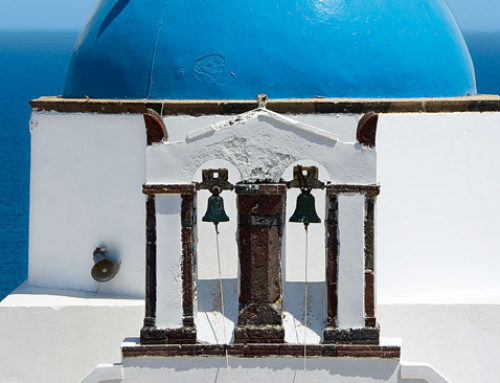Archaeologists have discovered new treasures at the Minoan Bronze Age settlement of Akrotiri on Santorini island, announced Greece’s Culture Ministry last week.
Ongoing excavations conducted in the prehistoric village by the Archaeological Society of Athens (ASA) and funded by the Kaspersky Lab have once again produced new treasures, including four vessels, bronze items, two large double-edged axes (“pelekys”) made of thin bronze plates, as well as segments of necklaces.

Other items uncovered in the interior of a building known as the “House of the Thrania” that produced in 1999 the famous Gold Ibex figurine which is today on show at the Museum of Prehistoric Thera, include stone tools and utensils as well as a variety of vessels placed around a wooden object and in a deep cavity in the ground.
The new finds provide insight into the rites and rituals of the ancient civilization and are part of a collection of 3,600-year-old artifacts discovered over the years at the settlement, which was destroyed in a volcanic eruption and buried in ash in 1628 BC.
Also known as the “Minoan Pompeii”, the Akrotiri site has brought to the fore a collection of rare artifacts most of which are on display at the Museum of Prehistoric Thera.
In the meantime, archaeologists and historians said they may have explained the enigma of Akrotiri’s blue monkeys seen portrayed on 3,600-year-old frescoes discovered in the 1960s. Primatologists, who joined the team of experts, now believe the paintings depict a species from the Indian subcontinent (not Africa as thought so initially) known as “Hanuman langurs”. This implies that the Aegean people who came from Crete and the Cyclades likely traveled for trade as far as 4,000km away.
Source : GTP news






